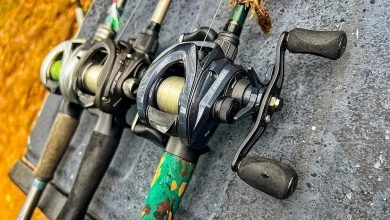
Houston Spring Gardening Tips Heat‑Survival & Mulching
Springtime in Houston is a gardener’s dream—until the heat kicks in. Temperatures can soar past 85°F by late April, and the soil starts baking under the Texas sun. That’s why gardeners must master heat-survival techniques and efficient mulching strategies. Whether you’re growing tomatoes or Texas sage, timing and preparation are key. This guide dives deep into Houston Spring Gardening Tips – Heat‑Survival & Mulching, arming you with real-world solutions for a resilient, flourishing garden.
Understanding Houston’s Spring Climate
Houston sits in USDA Hardiness Zone 9a. That means the city enjoys mild winters but jumps into intense spring heat fast. Average spring highs range from 70°F in March to over 90°F by late May. Combine that with unpredictable rainfall, and you’ve got a challenge for soil moisture retention and plant health.
To adapt, gardeners must:
- Choose heat-tolerant plant varieties.
- Use water-smart landscaping.
- Prioritize soil health and temperature control.
Gardens that ignore these needs often face heat stress, increased pest presence, and early plant burnout.

Why Mulching Is Your Best Friend
Mulching is not just a finishing touch—it’s a survival tactic. According to Texas A&M AgriLife Extension, mulching can reduce soil temperature by up to 10°F. That’s the difference between wilting leaves and thriving blooms.
Here’s why it works:
- Locks in moisture: Houston’s hot winds can evaporate water quickly. Mulch slows that down.
- Suppresses weeds: Competing weeds steal nutrients. Mulch chokes them before they emerge.
- Regulates soil temp: Keeps roots cool during the heat spikes.
- Improves soil health: Organic mulch like shredded bark or straw decomposes and feeds the soil.
Use 2-4 inches of organic mulch. Avoid piling it against stems, which can lead to rot and fungal diseases.
Choosing the Right Mulch for Houston Gardens
Not all mulch is equal. Houston’s climate demands mulch that can breathe, retain water, and resist compacting.
Recommended types:
- Shredded hardwood mulch: Long-lasting and affordable.
- Cypress mulch: Resists mold and insects.
- Pine needles: Ideal for acid-loving plants like azaleas.
- Compost mulch: Adds nutrients but needs frequent refreshing.
Avoid rubber or dyed mulches—they absorb heat and leach chemicals into the soil.
According to a study from the University of Florida, organic mulches reduce water usage by up to 30%, making them ideal for Houston’s spring gardening.
Beat the Heat: Survival Strategies for Spring Gardens
When heatwaves arrive early, plants go into defense mode. Growth slows, leaves wilt, and flowering stops. But you can protect your garden with smart planning.
-
Water Deep, Not Often
Frequent shallow watering does more harm than good. It trains roots to stay near the surface, which dries out fast. Instead:
- Water 2-3 times weekly.
- Use drip irrigation or soaker hoses.
- Water early morning (before 9 AM) to reduce evaporation.
-
Provide Shade Where Needed
Shade cloth or DIY shade from old bedsheets can reduce plant stress during heatwaves. Shade tomatoes, leafy greens, and delicate herbs like basil.
-
Prune Smartly
Remove dead or weak branches early in the season. This directs energy into strong growth and reduces unnecessary water loss.
-
Feed Strategically
Too much fertilizer in the heat can burn roots. Use slow-release or organic options, and apply before peak heat sets in.
Best Plants for Houston Spring Gardens
Choose plants that can handle rising temperatures. Native and adapted species outperform fussy exotics every time.
Great Choices:
- Tomatoes (heat-resistant types like Heatmaster)
- Peppers (Jalapeño, Banana)
- Okra
- Texas Sage
- Lantana
- Zinnias
Avoid cool-weather crops like spinach or lettuce after mid-March—they’ll bolt quickly.
Monitoring and Adjusting as You Grow
Gardening in Houston requires flexibility. Watch your plants and soil weekly. If mulch mats down or crusts, fluff it up. If leaves start to yellow or curl, check for signs of stress or pests.
Tech tools can help too. Soil moisture meters, smart irrigation systems, and gardening apps allow data-driven decisions.
FAQs on Houston Spring Gardening Tips – Heat‑Survival & Mulching
-
How early should I start mulching in spring?
Start mulching once soil warms to 50°F consistently, usually mid-March in Houston.
-
Is there such a thing as too much mulch?
Yes. More than 4 inches can suffocate roots and promote fungal growth.
-
Can I reuse old mulch from last year?
Only if it’s clean and mold-free. Mix it with fresh mulch to restore nutrients.
-
What’s the best watering schedule for Houston spring gardens?
Deep water 2-3 times a week depending on rainfall and plant type.
-
Should I use black plastic for heat protection?
Black plastic heats soil further. Use light-colored mulches or shade cloth instead.
-
Do all vegetables need mulching?
Yes. Even heat-loving veggies benefit from moisture retention and weed suppression.
-
How often should I replenish mulch?
Check every 6-8 weeks. Add new layers when mulch thins or breaks down.
Read More Also: What You Should Know Before Starting a Garden
Final Thought
Surviving spring heat in Houston doesn’t require magic—just strategy. With the right approach to mulching, plant choices, and watering, your garden can not only survive but thrive. These Houston Spring Gardening Tips – Heat‑Survival & Mulching are rooted in logic, research, and experience. Don’t wait for the sun to scorch your hard work—get ahead now.
Gardening in Houston is about balance. It’s about working with the environment, not against it. Mulch deeply. Water wisely. Choose resilient plants. And when in doubt, trust your soil—it often speaks louder than the weather forecast.







